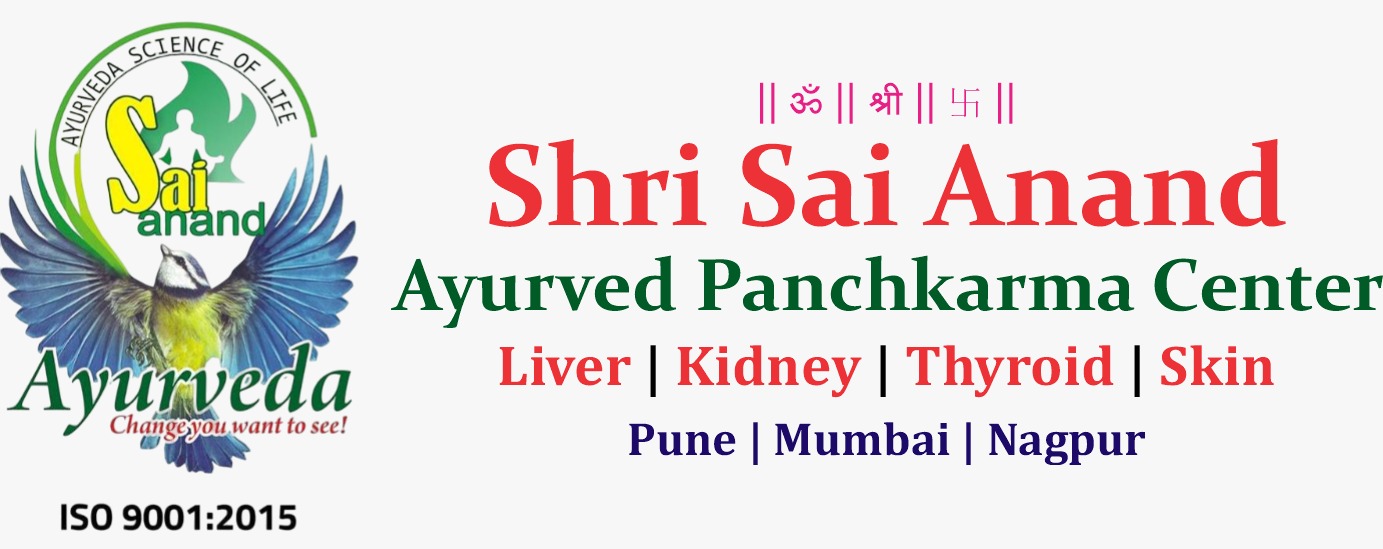[vc_row][vc_column][ultimate_spacer height=”32″ height_on_tabs=”32″ height_on_tabs_portrait=”32″ height_on_mob_landscape=”32″ height_on_mob=”32″][vc_row_inner][vc_column_inner width=”1/3″][bsf-info-box icon_type=”custom” icon_img=”id^8117|url^https://www.liverkidneyayurved.com/demo/wp-content/uploads/2020/03/liver.png|caption^null|alt^null|title^liver|description^null” img_width=”64″ title=”Liver Diseases” read_more=”more” link=”url:https%3A%2F%2Fwww.liverkidneyayurved.com%2Fliver-diseases%2F|||” hover_effect=”style_2″]Liver cirrhosis is characterized by the replacement of normal liver tissue with fibrous tissue.[/bsf-info-box][/vc_column_inner][vc_column_inner width=”1/3″][bsf-info-box icon_type=”custom” icon_img=”id^8118|url^https://www.liverkidneyayurved.com/demo/wp-content/uploads/2020/03/healthcare-and-medical1.png|caption^null|alt^null|title^healthcare-and-medical(1)|description^null” img_width=”64″ title=”Kidney Diseases” read_more=”more” link=”url:https%3A%2F%2Fwww.liverkidneyayurved.com%2Fkidney-diseases%2F|||” hover_effect=”style_2″ el_class=”bottompadding”]Kidneys are the organs that filter the waste and also manage the blood flow in the body. This condition occurs when…[/bsf-info-box][/vc_column_inner][vc_column_inner width=”1/3″][bsf-info-box icon_type=”custom” icon_img=”id^8119|url^https://www.liverkidneyayurved.com/demo/wp-content/uploads/2020/03/healthcare-and-medical.png|caption^null|alt^null|title^healthcare-and-medical|description^null” img_width=”64″ title=”Thyroid Diseases” read_more=”more” link=”url:https%3A%2F%2Fwww.liverkidneyayurved.com%2Fthyroid-diseases%2F|||” hover_effect=”style_2″]Ayurveda is very effective in the treatment of thyroid problems, as it works to eliminate the root cause of the disease.[/bsf-info-box][/vc_column_inner][/vc_row_inner][/vc_column][/vc_row][vc_row bg_type=”image” parallax_style=”vcpb-default” bg_image_repeat=”no-repeat” bg_img_attach=”fixed” el_class=”dt-sc-dark-bg”][vc_column][ultimate_spacer height=”60″ height_on_tabs=”75″ height_on_tabs_portrait=”75″ height_on_mob_landscape=”50″ height_on_mob=”50″][vc_custom_heading text=”Ayurvedic Liver Doctor in Mumbai | Ayurvedic Kidney Specialist in Mumbai” font_container=”tag:h1|text_align:center|color:%23000000″ use_theme_fonts=”yes” css=”.vc_custom_1615203367326{margin-bottom: 10px !important;}”][vc_row_inner][vc_column_inner width=”1/2″][dt_sc_separator class=”aligncenter bottom”][vc_empty_space][dt_sc_fancy_ul variation=”green”]
- He is working as a consultant Ayurvedic Liver and Kidney Specialist at Palkar Polyclinic, Mumbai.
- He is specially researched in liver and Kidney Diseases and treated more then 1500 patients.
- He has Conducting various medical camps, National & International seminar.
- He Participated in National & International seminars like First National conference in Parad and Gandhak held at Akurdi in 2001.
- Also participated in National seminar Oct 2012 on Virechan in Shirpur.
- He is well known Ayurvedic Liver Doctor and Kidney Specialist in Mumbai.
- He has Given a lecture on Liver diseases in Lavgankar mitra parivar in 2012.
[/dt_sc_fancy_ul][/vc_column_inner][vc_column_inner width=”1/2″][vc_empty_space][vc_video link=”https://youtu.be/upqJj7V06-g” el_aspect=”43″ align=”center”][vc_custom_heading text=”Saam Sanjivani interview By Dr. Manoj Kocheta” font_container=”tag:h4|text_align:center|color:%23000000″ use_theme_fonts=”yes” css=”.vc_custom_1584624140902{margin-bottom: 10px !important;}”][/vc_column_inner][/vc_row_inner][ultimate_spacer height=”75″ height_on_tabs=”50″ height_on_tabs_portrait=”50″ height_on_mob_landscape=”35″ height_on_mob=”35″][/vc_column][/vc_row][vc_row full_width=”stretch_row” bg_type=”image” parallax_style=”vcpb-default” bg_image_new=”id^8114|url^https://www.liverkidneyayurved.com/demo/wp-content/uploads/2020/03/bg.jpg|caption^null|alt^null|title^bg|description^null” bg_image_repeat=”no-repeat” bg_img_attach=”fixed” enable_overlay=”enable_overlay_value” overlay_color=”#fac466″ el_class=”dt-custom-bg-repeating-angles bottom customimg”][vc_column el_class=”dt-custom-bg-on-mid-bottom”][ultimate_spacer height=”105″ height_on_tabs=”90″ height_on_tabs_portrait=”90″ height_on_mob_landscape=”45″ height_on_mob=”45″][vc_custom_heading text=”Our Treatments” font_container=”tag:h2|text_align:center” use_theme_fonts=”yes” css=”.vc_custom_1584525609401{margin-bottom: 10px !important;}”][dt_sc_separator class=”aligncenter bottom”][vc_custom_heading text=”Where nature meets bliss” font_container=”tag:p|text_align:center” use_theme_fonts=”yes”][ultimate_spacer height=”32″ height_on_tabs=”96″ height_on_tabs_portrait=”96″ height_on_mob_landscape=”48″ height_on_mob=”48″][vc_row_inner equal_height=”yes” content_placement=”middle” el_class=”vcr_float_right”][vc_column_inner width=”1/3″][dt_sc_iconbox type=”type5″ icon_type=”image” title=”Padabhyanga” iconurl=”8367″ class=”no-icon-bg”]A beneficial Ayurvedic foot massage in which foot is massaged[/dt_sc_iconbox][ultimate_spacer height=”35″][dt_sc_iconbox type=”type5″ icon_type=”image” title=”Agni Karma” iconurl=”8367″ class=”no-icon-bg”]Our treatment is safe from any kind of side effect as it is pure & natural.[/dt_sc_iconbox][ultimate_spacer height=”35″][dt_sc_iconbox type=”type5″ icon_type=”image” title=”Swedan” iconurl=”8367″ class=”no-icon-bg”]Steam bath relieves the body and mind of stress and relaxes the muscles.[/dt_sc_iconbox][/vc_column_inner][vc_column_inner width=”1/3″ offset=”vc_hidden-xs”][/vc_column_inner][vc_column_inner width=”1/3″][dt_sc_iconbox type=”type5″ icon_type=”image” title=”Shirodhara” iconurl=”8367″ class=”alignright no-icon-bg”]There are specialized forms of ‘Shirodhara’ called Taildhara, Ksheeradhara, Takradhara and Jaladhara.[/dt_sc_iconbox][ultimate_spacer height=”35″][dt_sc_iconbox type=”type5″ icon_type=”image” title=”Vaman” iconurl=”8367″ class=”alignright no-icon-bg”]Vaman is a cleansing procedure intended mainly for the expulsion of vitiated ‘Kapha’.[/dt_sc_iconbox][ultimate_spacer height=”35″][dt_sc_iconbox type=”type5″ icon_type=”image” title=”Virechan” iconurl=”8367″ class=”alignright no-icon-bg”]The process of cleansing is carried out in the small intestine & other Pitta zones.[/dt_sc_iconbox][/vc_column_inner][/vc_row_inner][ultimate_spacer height=”45″][/vc_column][/vc_row][vc_row css=”.vc_custom_1601029141374{margin-top: 30px !important;border-top-width: 1px !important;border-right-width: 1px !important;border-bottom-width: 1px !important;border-left-width: 1px !important;padding-top: 20px !important;padding-right: 20px !important;padding-bottom: 20px !important;padding-left: 20px !important;border-left-color: #e5e5e5 !important;border-left-style: solid !important;border-right-color: #e5e5e5 !important;border-right-style: solid !important;border-top-color: #e5e5e5 !important;border-top-style: solid !important;border-bottom-color: #e5e5e5 !important;border-bottom-style: solid !important;border-radius: 1px !important;}”][vc_column][ultimate_spacer height=”45″][vc_custom_heading text=”Facilities” font_container=”tag:h2|text_align:center” use_theme_fonts=”yes” css=”.vc_custom_1584530061968{margin-bottom: 10px !important;}”][dt_sc_separator class=”aligncenter bottom”][ultimate_spacer height=”45″][vc_row_inner][vc_column_inner width=”1/5″][dt_sc_iconbox type=”type4″ icon_type=”image” iconurl=”8193″ class=”rounded partial-out-col-view”]Online appointments[/dt_sc_iconbox][/vc_column_inner][vc_column_inner width=”1/5″][dt_sc_iconbox type=”type4″ icon_type=”image” iconurl=”8193″ class=”rounded partial-out-col-view”]All panchkarma facilities are available[/dt_sc_iconbox][/vc_column_inner][vc_column_inner width=”1/5″][dt_sc_iconbox type=”type4″ icon_type=”image” iconurl=”8193″ class=”rounded partial-out-col-view”]Various Customised Packages– Yearly, monthly packages[/dt_sc_iconbox][/vc_column_inner][vc_column_inner width=”1/5″][dt_sc_iconbox type=”type4″ icon_type=”image” iconurl=”8193″ class=”rounded partial-out-col-view”]Urgent online advise[/dt_sc_iconbox][/vc_column_inner][vc_column_inner width=”1/5″][dt_sc_iconbox type=”type4″ icon_type=”image” iconurl=”8193″ class=”rounded partial-out-col-view”]Specialist consulting in liver, thyroid & kidney diseases[/dt_sc_iconbox][/vc_column_inner][/vc_row_inner][/vc_column][/vc_row][vc_row css=”.vc_custom_1601028089000{border-radius: 1px !important;}”][vc_column width=”2/3″][ultimate_spacer height=”45″][vc_column_text]
Liver Cirrhosis Treatment With Ayurveda
The following are some of the most common Ayurvedic tips for liver cirrhosis:
- Patient must take expert opinion of an Ayurveda for the right treatment of liver cirrhosis
- Cirrhosis is a complicated and serious situation thus, home remedies or any single herb treatment is not recommended.
- Quit alcohol
- Eat a well balanced and nutritious diet that contains a lot of fresh fruits and vegetables
- Opt for sources of good fats such as nuts, seeds, avocado, soy and olives
- Avoid packaged food items with added preservatives, including pickles
[/vc_column_text][/vc_column][vc_column width=”1/3″][ultimate_spacer height=”45″][vc_single_image image=”8244″ img_size=”full” alignment=”center”][/vc_column][/vc_row][vc_row][vc_column][dt_sc_separator horizontal_type=”single-line”][/vc_column][/vc_row][vc_row][vc_column width=”1/4″][ultimate_spacer height=”45″][vc_single_image image=”8269″ img_size=”full” css=”.vc_custom_1601029771237{border-top-width: 1px !important;border-right-width: 1px !important;border-bottom-width: 1px !important;border-left-width: 1px !important;border-left-color: #59d600 !important;border-right-color: #59d600 !important;border-top-color: #59d600 !important;border-bottom-color: #59d600 !important;border-radius: 1px !important;}”][/vc_column][vc_column width=”3/4″][ultimate_spacer height=”45″][vc_column_text]
Ayurvedic Treatment For Kidney Failure, Chronic kidney Disease Treatment
Dr. Manoj Kocheta provides Ayurvedic treatment for kidney failure varied kidney diseases like nephrotic Syndrome; polycystic kidney disease, acute kidney disease and chronic kidney disease treatment stage (1-5).
- Nephrotic syndrome is caused due to harmful deposits of proteins in the body leading to failing of kidney functions
- Polycystic kidney disease is a genetic problem which causes the cyst to grow inside the kidneys
- Acute kidney disease is the sudden condition in which kidneys fail to filter the waste and liquids from the body
- Chronic kidney disease treatment stage(1-5) is a slowly progressive disease and its symptoms are usually visible in the advanced stages
[/vc_column_text][/vc_column][/vc_row][vc_row][vc_column][vc_empty_space][/vc_column][/vc_row][vc_row full_width=”stretch_row” bg_type=”bg_color” bg_color_value=”#0bbf01″][vc_column width=”2/3″][vc_empty_space][vc_column_text]
Choose Best Ayurvedic Clinic, Choose Best Care For you
[/vc_column_text][/vc_column][vc_column width=”1/3″][vc_empty_space][vc_btn title=”Book Appointment” style=”outline” color=”white” size=”lg” align=”center” button_block=”true” link=”url:https%3A%2F%2Fwww.liverkidneyayurved.com%2Fcontact%2F|target:_blank”][/vc_column][/vc_row]
